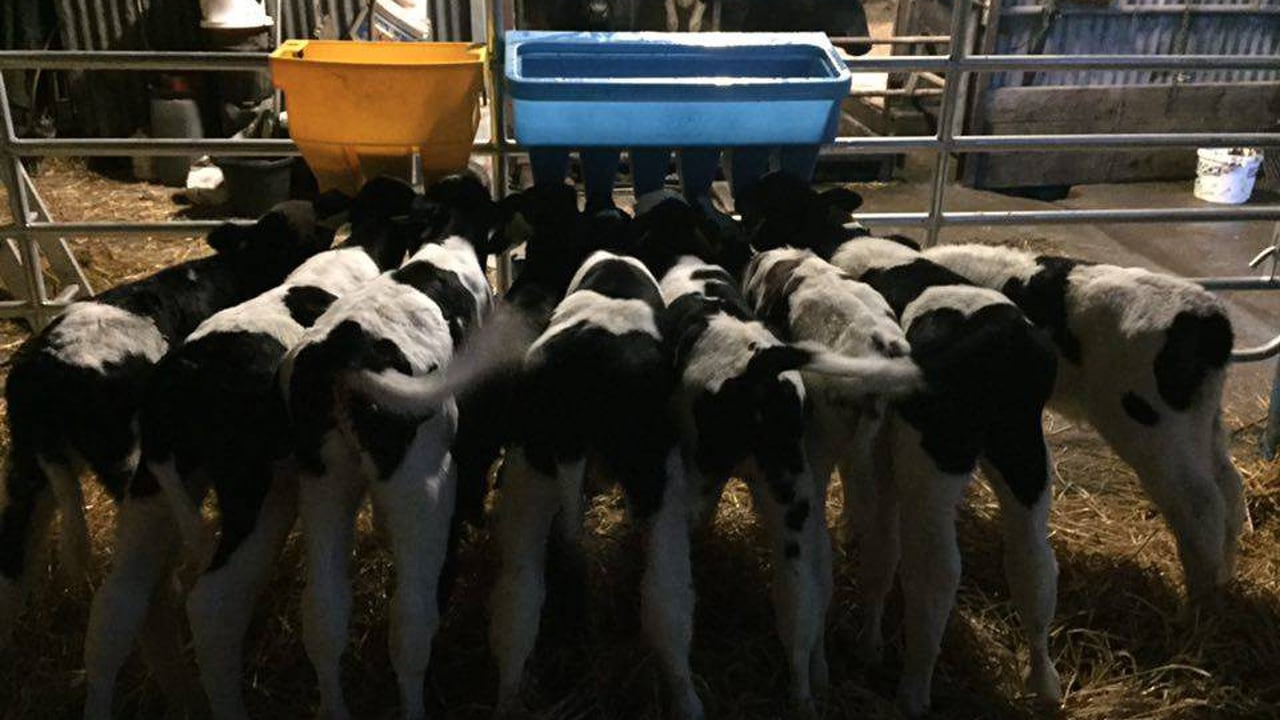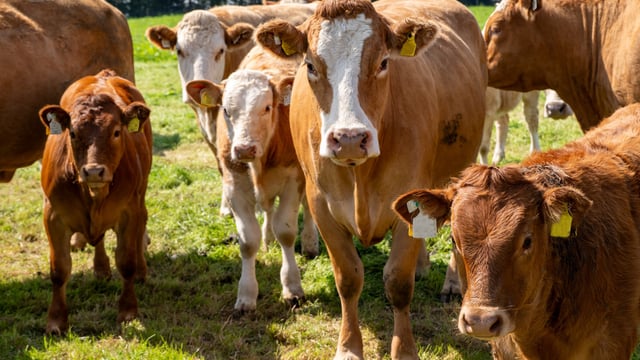Calf milk replacer: What will you be paying this spring?
Although the majority of people can forget about work on Christmas day, the price of milk replacer is on the mind of the farmer.
Being prepared for the arrival of calves is crucial in ensuring a successful calf rearing season, and this involves making sure calf houses, gates and pens are properly washed and disinfected.
All facilities must be completely free of any dirt or faeces as they can be harbours for diseases and likewise with any feeding equipment – teat feeders, buckets and milk trolleys, must be thoroughly cleaned and disinfected.
Minimising bacteria transfer from one season to the next is important in order to break the disease cycle in calf houses.
New-born calves only have a single compartment stomach and because of this, developing their rumen is vital during the rearing period.
A high quality milk replacer is needed to make sure that these calves have a high quality source of nutrition which is essential for the nutritional needs and growth targets in early life.
Milk replacer
On most farms that use milk replacer, it is introduced to calves at around three to five days of age after the calf has received colostrum and a number of feeds of transition milk.
If you are vaccinating calves for scour, it is vital that calves receive colostrum within the recommended time frame, and the transition milk for at least the first three days of life.
Depending on the manufacture of the vaccine, they may recommend longer, but this should be discussed with your vet.
It is important that calves receive adequate amounts of colostrum soon after birth; for this, farmers should follow the 1,2,3 rule.
Using the 1,2,3 rule should be as follows:
- Use the first milk (colostrum) from the cow;
- Feed the calf colostrum within the first two hours of birth;
- Calves must be offered at least 3L of good-quality colostrum.
Feeding milk replacer has a number of benefits, with the reduced risk of spreading disease a major one for herds across the country.
Using a milk replacer offers calves protection from these diseases. But if you feed calves whole milk or milk replacer, it is important that the calf is provided with energy and protein which is critical to support and maintain their normal bodily functions.
Prices
The prices of milk replacers are outlined below, with most milk replacers going up in price of about €3 - €4 from last year.
Some co-ops have urged their buyers to get their order in sooner rather than later to ensure the best price, as Quinns have stated that the prices below are their current prices and their could be a price increase on their products into January.
Below is a table that outlines some of the more popular milk replacers on the market and the price you can expect to pay for them.
| Milk replacer | Bag size (kg) | Protein percentage | Cost per bag | Cost per kg |
|---|---|---|---|---|
| Agway Duo | 20 | 24% | €53.00 | €2.65 |
| Agway Heifer 60% Skim | 20 | 25% | €67.00 | €3.35 |
| Agway 150 | 20 | 22% | €48.00 | €2.40 |
| Auctus Champion | 20 | 23.5% | €51.00 | €2.35 |
| Auctus Champion with added lung guard | 20 | 23.5% | €52.00 | €2.60 |
| Auctus Opti 60% Skim | 20 | 24% | €56.00 | €2.80 |
| Auctus Opti Skim with added Lung Guard | 20 | 24% | €57.00 | €2.85 |
| Auctus Opti-mum | 20 | 26% | €57.00 | €2.85 |
| Auctus Opti-mum with added lung guard | 20 | 26% | €58.00 | €2.90 |
| Auctus Turbo Thrive | 20 | 21.5% | €48.50 | €2.43 |
| Volac Heiferlac | 20 | 26% | €60.00 | €3.00 |
| Volac AAA Golden Maverick | 20 | 24% | €54.00 | €2.70 |
| Volac Blossom Easymix | 20 | 23% | €57.00 | €2.85 |
| Volac Maverick Once-a-day | 20 | 24% | €54.00 | €2.70 |
| Goldstar Easy Mix | 20 | 22% | €46.00 | €2.30 |
| Quinns Calf | 20 | 23% | €50.00 | €2.50 |
| Quinns Heifer | 20 | 25% | €53.00 | €2.65 |
| Eringold OXI | 20 | 22% | €50.00 | €2.50 |
| Eringold Extra | 20 | 26% | €60.00 | €3.00 |
| Eringold Super | 20 | 22% | €48.00 | €2.40 |
| Liffey Mills Elvor Performance (skim/whey) | 25 | 25% | €64.00 | €2.56 |
| Liffey Mills Elvor Confor (60% skim) | 25 | 21.5% | €72.00 | €2.88 |
| Country CalfLac (50% skim, 100% dairy protein) | 20 | 23% | €60.00 | €3.00 |
It is important to note that these prices may change depending on where you are purchasing milk replacer and should only be used as a guide.




